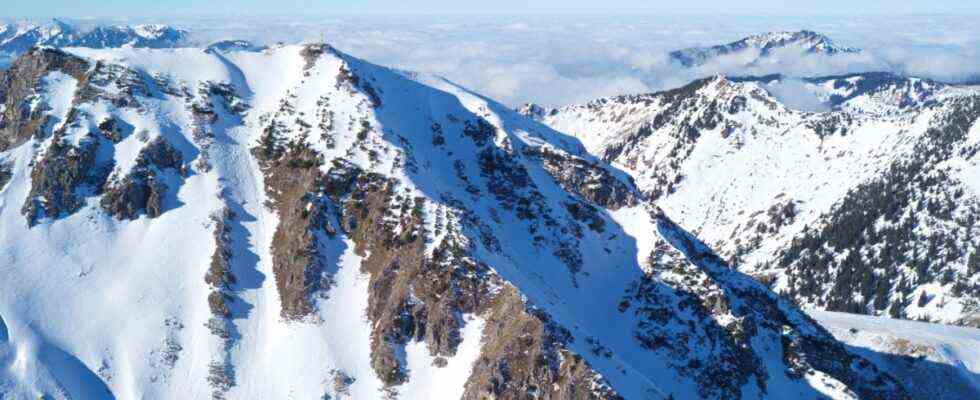Pretty villages, blooming mountain meadows, high peaks – the Allgäu is undoubtedly one of the loveliest regions in Germany. The names that the farmers used to call some of their beautiful mountains are less idyllic: Bscheißer, Hundass, Metzenarsch. However, these designations are no longer found on today’s maps. These are early cases of the cleansing of names that were perceived as offensive.
The Bscheißer is a few kilometers from Bad Hindelang. In official publications, however, the mountain can only be found as “Bschießer”. The correct designation can only be found on the local hiking trail signs. What is the reason? “Of course, this form is very coarse, and Bschießer is more of a euphemistic sound change,” says Wolf Armin von Reitzenstein, a specialist in mountain names and second chairman of the Association for Place and Field Name Research in Bavaria.
“This official form only appeared relatively late, in 1844 the mountain was still called Scheißer or Bscheißer.” An indication of how difficult life used to be for mountain farmers. “That can be taken quite literally for mountains that are dangerous because they drop stones,” says Reitzenstein. “There are also the names Schüsser, Hochscheißer and Fürschießer. This means that avalanches or debris can fall, which of course can be dangerous for the alpine farming.”
Dog ass and butt ass were also officially censored. The former has been called “Vilser Kegel” for over a hundred years, the latter has become “Kellespitze”https://www.sueddeutsche.de/bayern/.”Metze” is an old name for prostitutes. The word Metze ultimately goes back to Maid, says Reitzenstein. “So it doesn’t have to be a whore, but the name of the mountain is certainly meant in a particularly negative way.”
Bavaria’s mountain-loving Queen Marie is said to have once asked her guide the name of the conspicuous rocky peak. According to tradition, he spontaneously invented the new name “Kellespitze” because he thought “Metzenarsch” was unacceptable.
From the death of a dog to the sow’s trunk
Such indications that mountain names were changed or embellished in the course of transport connections to once isolated valleys and the gradual onset of tourism can also be found elsewhere in the Alps.
Austria’s highest peak, the Großglockner, was originally just a modest Glockner. And the Großvenediger bore the less impressive name Stützerkopf until the end of the 18th century.
However, many mountains have kept their bizarre names to this day, from “Hundstod” in the Berchtesgaden Alps to “Saurüssel” in the Mangfall Mountains. “These names are not very pretty, but they come from the ideas of the local population,” says Reitzenstein.
An example of something like early gendering – i.e. the inclusion of the gender aspect – is provided by Germany’s highest peak: the Zugspitze was originally the Zugspitze. The reason was – unlike today – language and not gender politics, since the names of the mountains were adapted to High German.
“The Spitz, spoken in Bavarian with a long i, is male,” says Reitzenstein. “The mountain names with ‘peak’ only became feminine later in the 19th century.” However, the originally male form can still be seen today in the example of the Zugspitze. “There is the Zugspitze summit and the Zugspitzbahn, so not the Zugspitze summit and the Zugspitze railway,” says Reitzenstein.
“The Americans think it’s funny.”
Nowadays, however, the Zugspitzbahn also provides the counter-example for the conscious twisting of a harmless mountain name into something suggestive. “Wank again”, advertises the company for its cable car to the summit of the mountain of the same name in Garmisch-Partenkirchen: “High point at 1780 meters”. The Wank is a popular excursion destination because of its panoramic view of the Zugspitze. Wank actually means “slope”, which is why there are several places with this name in the Alps. It gets lewd in English because “to wank” means “to jerk off”.
No need to be ashamed, thought the marketing people in Garmisch-Partenkirchen. “There are a lot of Americans in Garmisch, they almost collapsed laughing on the Wank,” says Klaus Schanda, Marketing Director of the Zugspitzbahnen. “We wanted to rejuvenate the mountain and not let the pun and ambiguity go to waste.”
The responsible advertiser Nic Nagel and marketing man Schanda are convinced of the effectiveness of the campaign: “The Americans find it funny, we get positive reactions to the campaign. Only a few ask: People, do you actually know what that means, you can’t do that do.”

